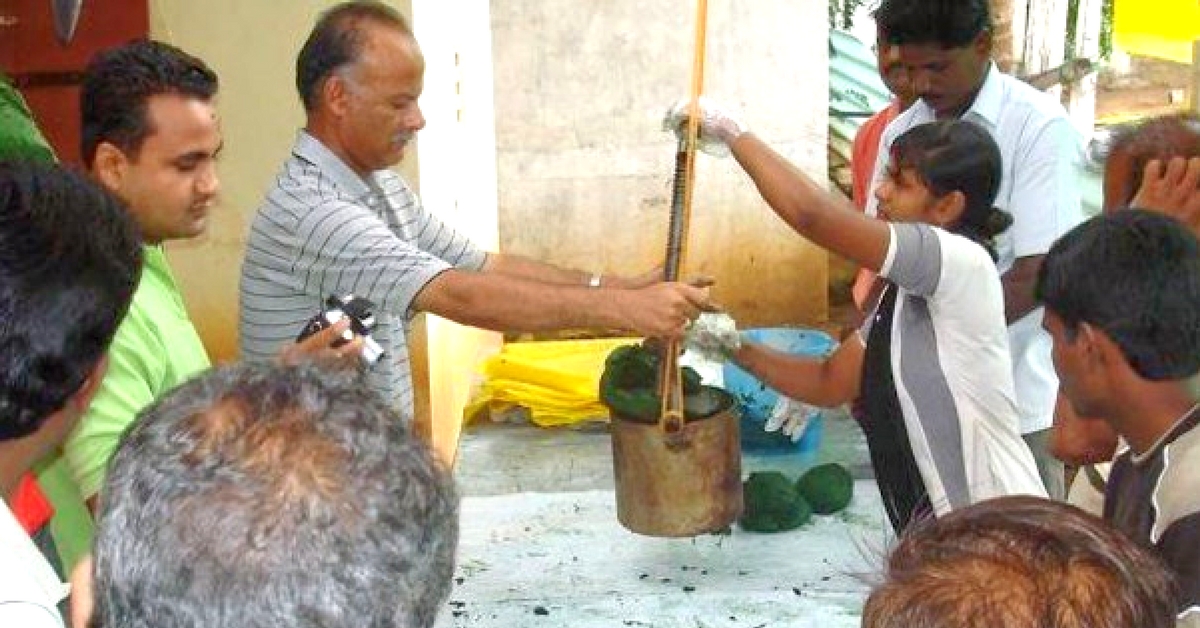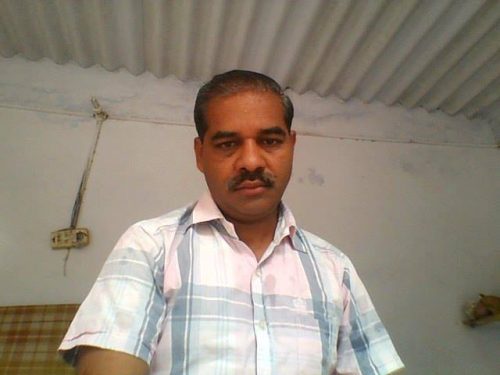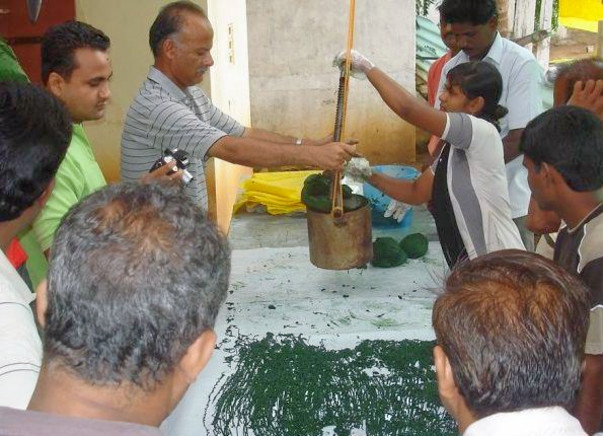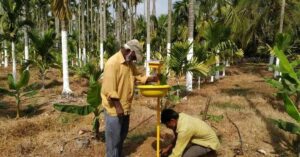Farming in Harmony With Nature: An Engineer’s Attempt at Building a Self-Sustaining Village
Rajeev Kumar Pal left the corporate life to start the Thulasi Eco-Village project in a Maharashtra village. He needs your help to further this project.

The recent discourse on Indian cities has grown around the question of habitability. Talk of rising pollution levels, inadequate sanitation and waste management, and haphazard urban planning has dominated discussions across media outlets. Families are leaving cities to protect their health.
In the villages, however, mass-migration to urban centres in search of better employment opportunities, continues to occur. The allure of the city is strong, but the lived reality for most who make that journey is often challenging.
Rajeev Kumar Pal, a 51-year-old former engineer in the automotive industry from Shamli, Uttar Pradesh, is working against the tide with his Thulasi Eco-Village project.

This project is an attempt at establishing a sustainable and self-reliant rural community in a remote village called Atale in Mandangad Taluka, Ratnagiri district. Perched in the Western Ghats, this area is located in an area of Maharashtra that receives high-rainfall.
Fed up with living in the city and working in a corporate environment, Rajeev decided to step out of these narrow confines nearly eight years ago.
“This decision gave me the opportunity to explore the country I called mine, but never knew much about,” said Rajeev. “I then travelled for more than seven years across rural India.” How did he survive for those seven years?
“I survived on the considerable savings I had built up, and on the odd occasion would go back to the city and work on short-term corporate assignments,” he said. After years of travel, he zeroed in on Atale in August 2016.
With barely a population of 1,000, Atale is located right in the midst of some unique flora and fauna, and he immediately knew that this is where he was meant to live.
The village itself is located in a high rainfall area, but due to the recent agrarian crisis, many had decided to give up farming and leave for big cities like Mumbai and Pune.
Rajeev is looking to stem that trend. Built by his team and fellow villagers, this eco-village stands on a 10-acre strip of land, which he hopes will become a centre for learning, practice, demonstration and dissemination of modern farming practices that promote ecological sustainability.
Read also: These 40 Families Left Hyderabad and Built a Sustainable Village All by Themselves
“Many fellow Indians living in our villages, grow their own food, depending less on fuel, and have access to cleaner air and water. The potential for sustainable living in rural areas is a lot higher, and I want to find a way to make this work despite the allure of cities,” he said.
On the eco-village, Rajeev and his team have grown areca nut, coconut, coffee, black pepper, ginger, papaya, and vanilla, among a host of other indigenous trees on the land as these required the least amount of care and were best suited to the climate for the sustenance of the village folk.

Rajeev is looking to the Subhash Palekar and Suryamandal model of sustainable farming. To the uninitiated, Subhash Palekar, a Padma Shri award-winning agro-scientist, developed a simple, no-expense method of cultivation over two decades (1996-2016) that did not require any chemicals. There are no external inputs required, and everything a farm needs comes from the land itself.
Rajeev and the villagers of Atale have also set up a model farm on a three-acre plot based on the noted entrepreneur and farmer Bhaskar Save’s Suryamandal model, where they are demonstrating natural farming methods.
What Rajeev hopes to accomplish here is to show the villagers of Atale that they can grow and access their own vegetables and fruits in such three-acre plots, thus providing a real avenue for self-sustenance instead of going to the city and working for someone else.
However, this eco-village project needs more funds to support rainwater harvesting ponds on the model farm. “The earthworks enhance the water holding capacity of the land and allow the intensely productive bio-diversity to thrive. These ponds will be used to grow Azolla and fish,” said Rajeev.

“We shall integrate it with native poultry breeds and freshwater pearl culture, and generate some income with this integrated approach to farming. Hopefully, this will convince some of the youth to come back to their village,” he adds.
Read also: All About Permaculture: Traditional Farming Mixed With Modern Tech to Create a Sustainable System
What Rajeev is most concerned about this transition made by young men from the village leaving to the city, is the loss traditional knowledge system. This is driving them away from self-reliance towards what he calls “helpless consumers.”.
With the eco-village project, he hopes to establish an independent, self-reliant, caring and sustainable village community that seamlessly coexists with the surrounding environment. The two words critical to this model is interdependence and harmony.
You can contribute to the Thulasi Eco-Village project here.
Like this story? Or have something to share? Write to us: [email protected], or connect with us on Facebook and Twitter.
NEW: Click here to get positive news on WhatsApp!
This story made me
- 97
- 121
- 89
- 167
Tell Us More
We bring stories straight from the heart of India, to inspire millions and create a wave of impact. Our positive movement is growing bigger everyday, and we would love for you to join it.
Please contribute whatever you can, every little penny helps our team in bringing you more stories that support dreams and spread hope.



















